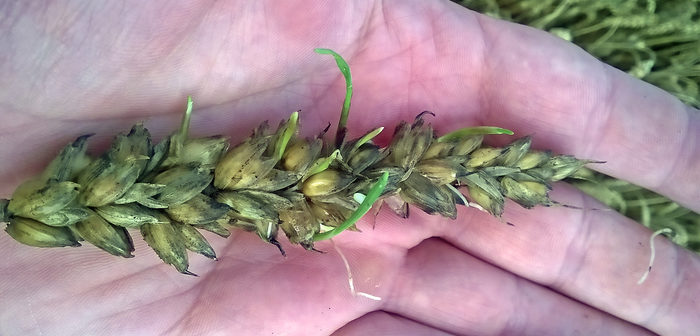The continued wet autumn, particularly in the north of the UK, has left many cereal growers as yet unable to complete their harvest. With some unharvested cereals already beginning to sprout in the ear and others heading in that direction, some producers now fear losing entire crops.
But feed preservation specialists, Kelvin Cave Ltd, say there are ways of salvaging such cereals, some of which could provide a tradeable livestock concentrate feed.
Andy Strzelecki, the company’s technical director acknowledges a chitted crop has lost some of its value and may be unmarketable for its original purpose.
However, he says: “Potentially, it can be salvaged into something useful if the right preservation techniques and materials are used.”
This means using a small clamp and ensiling the grain in a process which involves crimping and compacting the combine-harvested crop, and covering with an impermeable plastic sheet to create an airtight seal.
“Any method of preservation is going to be a challenge for a crop which is wet and has chitted and may well be lodged, but our experience tells us that by far the best approach is to go ahead and combine the grain, and store it in an airtight clamp or plastic tube,” he says.
“It’s important to crimp the cereal – a process which involves breaking the grain’s surface and exposing the carbohydrate and protein and which is often done by a contractor – and apply the appropriate preservative.
“Our advice with the choice of crimping preservative is to ensure the one you use has a track record of delivering a rapid but controlled lactic fermentation and quickly killing yeasts and moulds,” he says.
From Kelvin Cave’s own portfolio he recommends CrimpSafe, a preservative which comes in two versions which together can handle grain at moisture contents of less than 20% and over 30%.
“At high moisture levels, it could be prohibitively expensive to attempt to dry grain and the sprouts themselves can create problems in some dryers,” he says. “Equally, storing a moist crop aerobically without ensiling is not always practical as it not only requires a good dry grain store which may not be available, but it may also require large amounts of product.
“However, a successfully crimped and ensiled cereal crop can ferment well and have a high feed value for livestock, even if harvested late,” he says. “But most important at this time of year, it can salvage a crop which would otherwise be written off, and in so doing, provide either a livestock feed or a tradeable product for an arable farm.”




